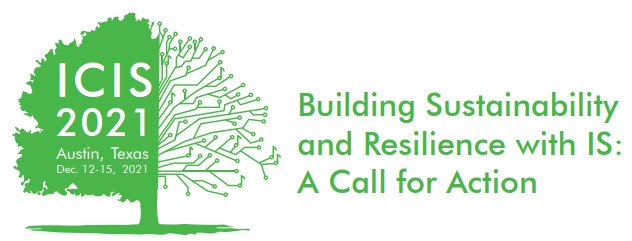Conference Theme Track A: IS for Sustainability
Loading...
Paper Number
2415
Paper Type
Completed
Description
Efficient building and maintenance of user networks is a fundamental problem for the management of open-access information systems whose business model relies directly on social impact. This article presents a methodology of user community building and management for cloud-based AI-enabled knowledge repositories (AILPs) which are considered a relevant part of enterprise learning ecosystems. Their assessment is based on the number of users, user engagement and satisfaction. Therefore, the indicators of user community growth are a basis for evaluating the quality of IS management and services. To optimize IS business performance, we applied a social impact model, derived from multi-level simulation and a self-contained multicriteria analysis framework. The model combines controlled discrete-event systems, learning cellular automata, and anticipatory decision support. These all serve to optimize user network development strategies. The primary application of this model is the exploitation of an innovative digital knowledge platform, developed within a recent Horizon 2020 research project.
Recommended Citation
Skulimowski, Andrzej M.J., "User Community Development in Social Networks to Support AI-Enabled Knowledge Provision" (2021). ICIS 2021 Proceedings. 9.
https://aisel.aisnet.org/icis2021/is_sustain/is_sustain/9
User Community Development in Social Networks to Support AI-Enabled Knowledge Provision
Efficient building and maintenance of user networks is a fundamental problem for the management of open-access information systems whose business model relies directly on social impact. This article presents a methodology of user community building and management for cloud-based AI-enabled knowledge repositories (AILPs) which are considered a relevant part of enterprise learning ecosystems. Their assessment is based on the number of users, user engagement and satisfaction. Therefore, the indicators of user community growth are a basis for evaluating the quality of IS management and services. To optimize IS business performance, we applied a social impact model, derived from multi-level simulation and a self-contained multicriteria analysis framework. The model combines controlled discrete-event systems, learning cellular automata, and anticipatory decision support. These all serve to optimize user network development strategies. The primary application of this model is the exploitation of an innovative digital knowledge platform, developed within a recent Horizon 2020 research project.
When commenting on articles, please be friendly, welcoming, respectful and abide by the AIS eLibrary Discussion Thread Code of Conduct posted here.



Comments
01-Sustainability